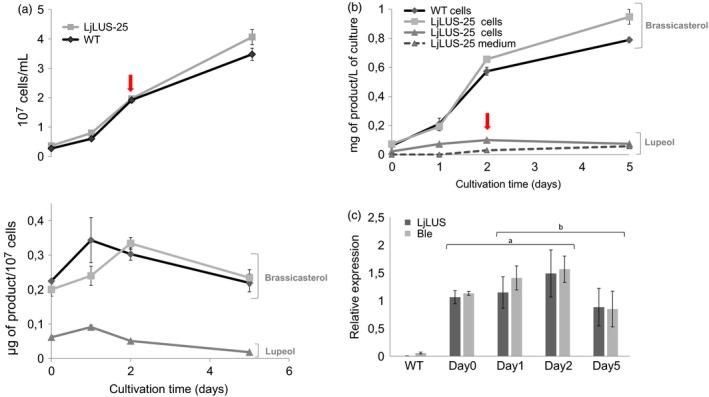Figure 4.

Lupeol productivity in 400‐mL batch cultures. Triplicate cultures were grown in F/2 medium in laboratory‐scale Algem® photobioreactors for 5 days. (a) Cell density and productivity per cell of brassicasterol for the wild type (diamonds) and LjLUS‐25 (squares). Lupeol was only detected in the LjLUS‐25 line (triangles). (b) Brassicasterol extracted from cell pellet of WT (diamonds) and the LjLUS‐25 line (squares). Lupeol extracted from LjLUS‐25 is shown by the triangles in the cell (full line) and the medium (dashed line). No brassicasterol was detected in the medium of either the WT or LjLUS‐25. (c) Gene expression of LjLUS and ble r resistance marker for LjLUS‐25 transformant line (WT as negative control) monitored during culturing time and relative to the reference genes RP3a and UBQ. Red arrows indicate the day when maximum lupeol productivity is observed corresponding to mid‐exponential growth phase as described in the text. All error bars represent the standard deviation from three biological replicates. Identical letters denote groups where means are not statistically different according to a post hoc Tukey test with α = 0.01.
